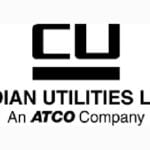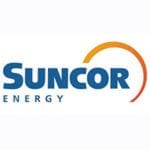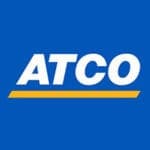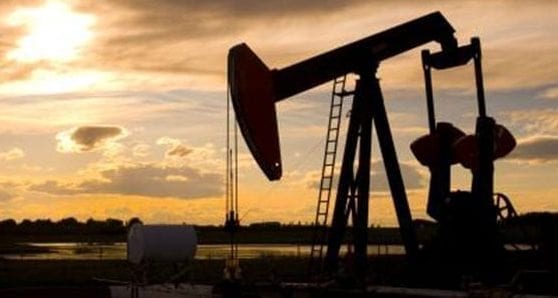 Canadian Utilities
Canadian Utilities
Canadian Utilities had second quarter 2019 adjusted earnings of $126 million, or $0.46 per share, compared to $107 million, or $0.39 per share, in the second quarter of 2018, the company reported on Thursday.
“Higher earnings were mainly due to the favourable impact of the electricity transmission 2018-2019 general tariff application decision and natural gas transmission 2019-2020 general rate application decision, as well as ongoing growth in the regulated rate base, earnings growth in the hydrocarbon storage business, cost efficiencies, and lower income taxes,” reported the company in releasing its results.
“In the second quarter of 2019, Canadian Utilities invested $241 million in capital projects, of which $215 million was invested in regulated utilities. The remaining $26 million invested includes planned capital maintenance in the electricity generation fleet. In the period 2019 to 2021, Canadian Utilities plans to invest $3.5 billion in regulated utilities in Canada and Australia, which will continue to strengthen our high-quality earnings base,” it said.
 Canadian Utilities said it entered into definitive agreements in May to sell its entire Canadian fossil fuel-based electricity generation portfolio for aggregate proceeds of approximately $835 million, subject to customary closing adjustments. The sale will occur as three separate transactions. The transaction for Canadian Utilities’ 50 per cent ownership interest in the 260 MW Cory Cogeneration Station closed in July. The remaining two transactions, one for 10 partly- or fully-owned natural gas-fired and coal-fired electricity generation assets located in Alberta and British Columbia, and the other for Canadian Utilities’ 50 per cent ownership in the 580 MW Brighton Beach Power joint venture, are expected to close in the second half of 2019.
Canadian Utilities said it entered into definitive agreements in May to sell its entire Canadian fossil fuel-based electricity generation portfolio for aggregate proceeds of approximately $835 million, subject to customary closing adjustments. The sale will occur as three separate transactions. The transaction for Canadian Utilities’ 50 per cent ownership interest in the 260 MW Cory Cogeneration Station closed in July. The remaining two transactions, one for 10 partly- or fully-owned natural gas-fired and coal-fired electricity generation assets located in Alberta and British Columbia, and the other for Canadian Utilities’ 50 per cent ownership in the 580 MW Brighton Beach Power joint venture, are expected to close in the second half of 2019.
“In June 2019, Canadian Utilities, along with its partner Quanta Services Inc., entered into definitive agreements to sell Alberta PowerLine Limited Partnership (APL) through a competitive process for total proceeds of approximately $300 million, and the assumption of approximately $1.4 billion of APL debt,” said the company.
“As part of these agreements, Canadian Utilities is offering an opportunity for Indigenous communities along the transmission line route to obtain up to a 40 per cent equity interest in APL. The final ownership mix will be determined upon close of the purchase opportunity for Indigenous communities. Canadian Utilities will remain the operator of APL over its 35-year contract with the Alberta Electric System Operator. The sale is expected to close in the fourth quarter of 2019, subject to receipt of regulatory approvals and satisfaction of other customary closing conditions.”
Cenovus Energy
Cenovus Energy says its strong second-quarter results were largely driven by a higher average realized crude oil price of $62.75 per barrel (bbl), up 22 per cent from the same period in 2018.
In releasing its results on Thursday, the company said net earnings from continuing operations were approximately $1.8 billion in the second quarter compared with a net loss of $410 million in the same period in 2018. Net earnings included one-time deferred income tax recoveries of $658 million related to a reduction in Alberta’s corporate income tax rate and $387 million due to an increase in the tax basis of Cenovus’s U.S. refining assets. Non-operating unrealized foreign exchange gains of $407 million compared with losses of $205 million in the second quarter of 2018, and higher operating earnings also contributed to the year-over-year net earnings increase, it said.
 “In late 2017, we implemented a plan to improve the resilience and competitiveness of our company,” said Alex Pourbaix, Cenovus president and chief executive officer. “Our excellent second-quarter results are a continuation and a reflection of our disciplined approach to operations, cost control and capital allocation. We continue to position ourselves to generate significant free funds flow in almost any commodity price environment.”
“In late 2017, we implemented a plan to improve the resilience and competitiveness of our company,” said Alex Pourbaix, Cenovus president and chief executive officer. “Our excellent second-quarter results are a continuation and a reflection of our disciplined approach to operations, cost control and capital allocation. We continue to position ourselves to generate significant free funds flow in almost any commodity price environment.”
Cenovus said it generated second-quarter free funds flow of $834 million, up 73 per cent from a year earlier, adjusted funds flow of approximately $1.1 billion, a 40 per cent year-over-year increase, and cash from operating activities of nearly $1.3 billion, up 139 per cent from the same period in 2018. In the first six months of the year, the company generated almost $1.6 billion in free funds flow, approximately $2.1 billion in adjusted funds flow and $1.7 billion in cash from operating activities.
It said its earnings from continuing operations were $267 million compared with an operating loss of $292 million in the year-earlier period.
The company said it continues to pursue a diversified transportation strategy to get its oil to markets where it can achieve the highest price. This includes the company’s plan to ramp up its rail capacity to approximately 100,000 bbls/d in 2019, which remains on schedule.
“We view rail as a structural element of our market access strategy, but we cannot emphasize enough the importance of getting additional pipeline capacity out of Western Canada built,” said Pourbaix. “The unfounded attacks on our industry that have stalled new pipelines must be addressed for the benefit of all Canadians. Canadian oil is among the most responsibly produced in the world, and it makes no sense to stop it from reaching global customers.”
The company said its oil production continued to be limited by the Alberta government’s mandated production curtailment program in the second quarter, with oil sands volumes averaging 344,973 bbls/d, 11 per cent lower than in the same period a year earlier. Based on mandated production volumes for July and August, the company anticipates average bitumen and crude oil production will be a maximum of 360,000 bbls/d for the third quarter. Production guidance for 2019 remains unchanged, with oil sands volumes expected to average between 350,000 bbls/d and 370,000 bbls/d for the year, it said.
“As a result of Alberta’s mandatory curtailment program, differentials between Western Canadian Select (WCS) and light oil benchmark prices have remained relatively narrow in 2019, contributing to improved financial performance for the Canadian oil industry and increased royalty payments. In Alberta, royalties on Cenovus’s production for the first six months of this year amount to more than $500 million. These royalties support the delivery of services and infrastructure such as health care, education, schools and roads,” added Cenovus.
“While curtailment was always meant to be a temporary measure, it’s doing what it was designed to do, and we expect the Alberta government will continue to use it as a tool while there is an inadequate balance between takeaway and production capacity in the province,” said Pourbaix. “In the near term, I’m optimistic that we’re beginning to see improved market access through the ramp-up of rail capacity and, over the longer term, through progress on pipeline solutions such as the Trans Mountain Expansion Project, Keystone XL and Enbridge’s Line 3 Replacement Program.”
Husky Energy
Husky Energy recorded net earnings of $370 million during its second quarter, down from $448 million a year ago.
Cash flow from operating activities of $760 million compared to $1 billion in the second quarter of 2018 and funds from operations of $802 million compared to $1.2 billion in the year-ago period. This reflects lower commodity prices, reduced production and throughputs due to turnarounds, and non-routine pre-tax negative adjustments totalling $106 million, said the company in releasing its results on Thursday.
 “We remain on track with the plan we outlined at our recent Investor Day,” said CEO Rob Peabody. “This includes the acceleration of the Lloyd thermal project at Dee Valley, which is now steaming with production expected later in the third quarter.
“We remain on track with the plan we outlined at our recent Investor Day,” said CEO Rob Peabody. “This includes the acceleration of the Lloyd thermal project at Dee Valley, which is now steaming with production expected later in the third quarter.
“Our focus remains on capital discipline and consistent execution, while increasing our ability to capture higher margins across the integrated corridor and offshore businesses.”
The company said its second quarter financial performance was impacted by lower production and reduced throughputs, primarily due to a heavy maintenance turnaround schedule and non-routine writeoffs and expenses. This maintenance program is now largely complete.
“In the downstream segment, the Lima crude oil flexibility project is on track for completion in the fourth quarter of 2019 and will provide increased heavy crude processing capacity. Construction is expected to begin on the Superior Refinery rebuild project this fall, subject to regulatory approvals.
“In the offshore business, Husky drilled the final three wells at the Liuhua 29-1 field at the Liwan Gas Project. All seven wells are expected to be completed by the end of 2019, with first production around the end of 2020. In the Atlantic region, two new infill wells were brought on production and construction advanced at the West White Rose Project,” said Husky.
“The company continues to deliver on the plan set out at Investor Day, including its 2019 guidance of $3.3 to $3.5 billion in capital expenditures and annual average production of 290,000-305,000 barrels of oil equivalent per day (boe/day).”
Precision Drilling
Precision Drilling saw a net loss of $14 million in the second quarter of this year compared with a net loss of $47 million a year ago.
The company, in reporting its financial results on Thursday, said revenue of $359 million was an increase of nine per cent compared with the second quarter of 2018.
 It said funds provided by operations was $41 million versus $50 million in the prior year quarter. Cash provided by operations was $106 million versus $130 million in the prior year quarter. The decrease in funds and cash provided by operations in the current quarter was primarily the result of a $28 million tax refund received in the prior year comparative quarter partially offset by improved operating results in 2019, it said.
It said funds provided by operations was $41 million versus $50 million in the prior year quarter. Cash provided by operations was $106 million versus $130 million in the prior year quarter. The decrease in funds and cash provided by operations in the current quarter was primarily the result of a $28 million tax refund received in the prior year comparative quarter partially offset by improved operating results in 2019, it said.
“Precision delivered strong second quarter operating performance supported by the competitive strength and resulting market share of our Super Triple rigs in our three core markets, the U.S., Canada and Middle East. Precision’s average global activity of 112 rigs for the quarter was in line with last year (111), despite industry headwinds and lower industry activity levels in North America,” said Precision’s president and CEO Kevin Neveu.
“Second quarter adjusted EBITDA of $81 million increased 30 per cent from prior year due to improved pricing and cost control efforts, yielding stronger than expected cash flow and enabling Precision to reduce debt at a faster rate than planned. With $124 million of debt repayments completed year-to-date, we are increasing our 2019 debt reduction target to $200 million, compared to our previous targeted range of $100 million to $150 million. Reducing debt levels remains a strategic priority and we expect to continue our accelerated pace with strong free cash flow.
“In the U.S., our High Performance, High Value strategy and Super Triple fleet quality and field performance continue to drive strong financial results. Our 68 AC Super Triples remain over 90 per cent utilized with firm pricing. During the quarter, we signed 15 new term contracts from six months to two years duration, increasing our average 2019 U.S. contract coverage to 48 rigs. We completed our previously announced full SCR to AC Super Triple upgrade, entering service in June and representing the sixth AC ST-1500 walking rig added to our U.S. fleet since early 2018. We expect Super Triple demand and pricing to remain firm in the second half of the year as our customers continue to throttle spending within cash flow while focusing on the most efficient and best performing rigs.”
He said the company’s new-build rig in Kuwait spudded its first well on July 1, ahead of schedule and under budget.
Suncor
Calgary-based energy giant Suncor had net earnings of $2.729 billion ($1.74 per common share) in the second quarter of 2019, compared to net earnings of $972 million ($0.60 per common share) in the prior year quarter.
In a news release, the company said its second quarter 2019 operating earnings were $1.253 billion ($0.80 per common share), compared to $1.190 billion ($0.73 per common share) in the prior year quarter.
“This quarter, we delivered $3.0 billion in funds from operations, a new second quarter record, and $1.3 billion of operating earnings due to our team delivering solid operating performance while taking full advantage of our flexibility to maximize our cash flow, despite the impact of curtailments,” said Mark Little, president and chief executive officer.
 “Strong cash flow generation and our commitment to capital discipline allowed us to return value to our shareholders through $658 million in dividends and $552 million in share repurchases while, at the same time, strengthening our balance sheet.”
“Strong cash flow generation and our commitment to capital discipline allowed us to return value to our shareholders through $658 million in dividends and $552 million in share repurchases while, at the same time, strengthening our balance sheet.”
Funds from operations were $3.005 billion ($1.92 per common share) in the second quarter of 2019, compared to $2.862 billion ($1.75 per common share) in the prior year quarter, an increase of 10 per common share.
Total oil sands production during the second quarter of 2019 increased to 692,200 barrels per day (bbls/d), from 547,600 bbls/d in the prior year quarter. Despite being limited by production curtailments, oil sands achieved a new second quarter production record, with the increase due to improved oil sands utilization and an increase in Fort Hills production. Fort Hills production was 89,300 bbls/d, compared to 70,900 bbls/d in the prior year quarter, said the company.
The company said total upstream production was 803,900 barrels of oil equivalent per day (boe/d) during the second quarter of 2019, compared to 661,700 boe/d in the prior year quarter, marking a second quarter production record. The increase was primarily due to lower planned oil sands maintenance, improved reliability at Syncrude and the ramp up of Fort Hills and Hebron production throughout 2018, partially offset by the impact of mandatory production curtailments in the province of Alberta, which began on Jan. 1, 2019.
“Suncor’s upstream assets produced more than 800,000 bbls/d of crude oil during the second quarter of 2019, marking a new second quarter production record, while planned maintenance was completed at many of our Oil Sands assets in the quarter,” said Little. “In addition, the team was able to create significant value by opportunistically shifting production among our assets through this period of curtailment – another great example of the benefits that come from having a broad and flexible asset base.”
ATCO
ATCO announced on Thursday that its second quarter 2019 adjusted earnings were $78 million, or $0.68 per share, compared to $61 million, or $0.53 per share, in the second quarter of 2018.
“Higher second quarter earnings were recorded in Structures & Logistics, Neltume Ports, and Canadian Utilities. Structures & Logistics achieved $1 million in higher earnings in the second quarter, mainly due to earnings from the LNG Canada workforce accommodation project, and higher rental activity,” said the company in releasing its results.
 “Neltume Ports contributed $4 million in earnings in the second quarter, driven by continued strong movement of copper cargo volumes in Chile.
“Neltume Ports contributed $4 million in earnings in the second quarter, driven by continued strong movement of copper cargo volumes in Chile.
“Canadian Utilities recorded $10 million in higher second quarter earnings, mainly due to favourable electricity and natural gas transmission regulatory decisions, ongoing growth in the regulated rate base, cost efficiencies, and lower income taxes.”
ATCO said modular structures business activity will continue to ramp up in the second half of this year due to the execution of secured contract work such as LNG Canada, ongoing rental earnings from Chico, Calif., PMC contracts in the U.S. and Canada, and orders with major mining companies in Western Australia.
“Modular structures has successfully commenced both manufacturing and site construction work for the LNG Canada workforce accommodation project. Manufacturing commenced in the first quarter of 2019 and is planned to continue through 2020. Modular structures completed the first stage handover of 300 beds in June 2019, for a 600-person camp in Western Australia. Total contract value is $27 million with completion of all 600 beds expected in August 2019,” said the company.
“Modular structures has secured multiple contracts for approximately $27 million with the government of British Columbia’s supportive housing program in response to the growing issue of homelessness in communities. Modular structures was awarded a $7 million contract to supply modular product for a Marriott hotel near San Francisco, Calif., with an expected completion in July 2019. A second $7 million contract to supply modular product for a Marriott hotel in Oakland, Calif., is expected to be complete in November 2019.”
The views, opinions and positions expressed by columnists and contributors are the author’s alone. They do not inherently or expressly reflect the views, opinions and/or positions of our publication.

